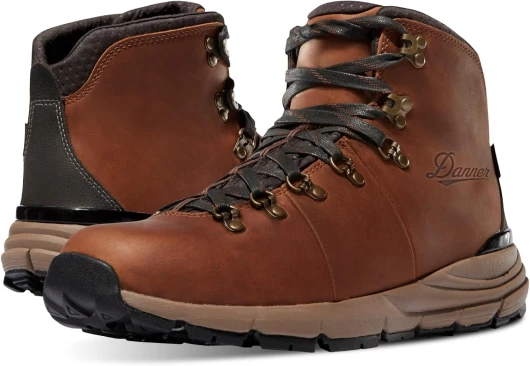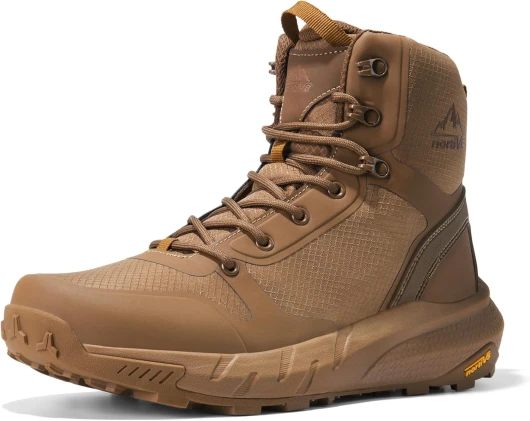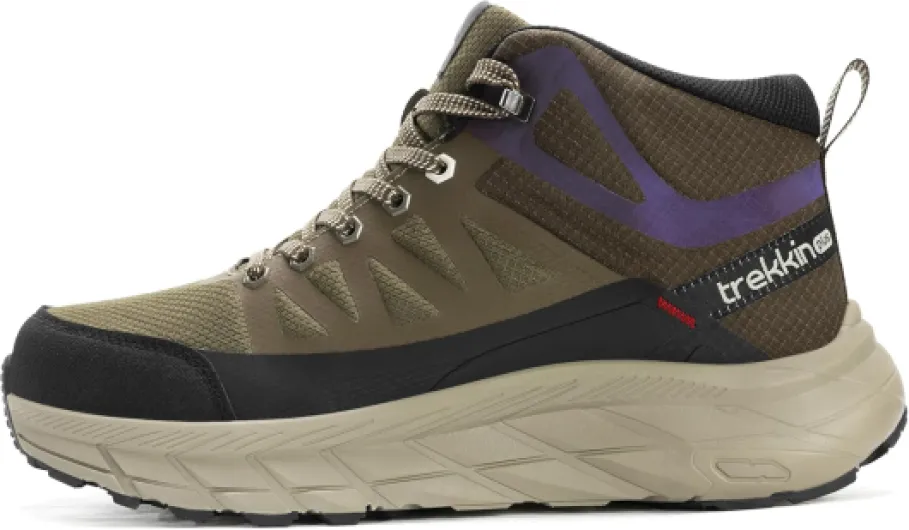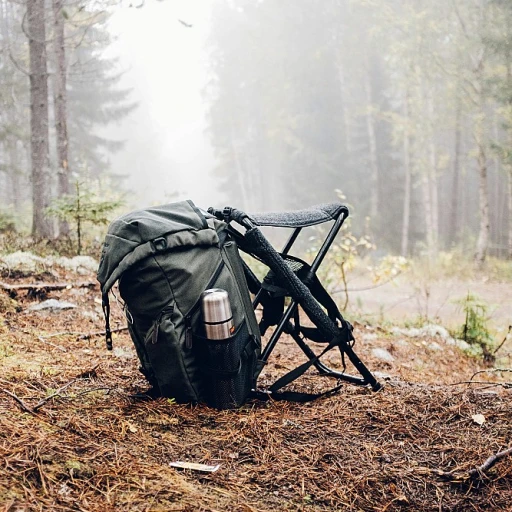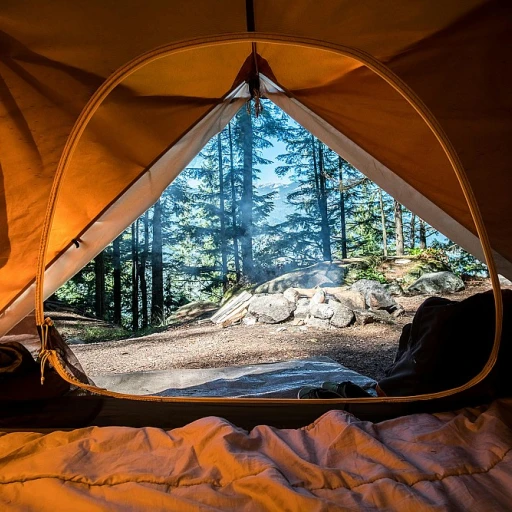
Understanding the Challenges of Hot Weather Hiking
Facing the Heat on the Trails
Embarking on a hiking adventure during the sizzling summer months presents its own set of unique challenges. The intensity of hot weather can push hikers to their limits, demanding both endurance and the right gear to stay comfortable. Choosing the correct pair of hot weather hiking boots becomes paramount during these sweltering times.
The primary challenge lies in regulating body temperature and keeping your feet dry. As temperatures soar, our feet tend to sweat more, which can lead to discomfort, blisters, and even safety hazards if not managed properly. Moreover, added heat increases the importance of a boot's material, which we'll explore further. No one wants to cut their hike short due to excessively hot boots, right?
In addition to heat management, hikers need to be aware of the post-hike condition of their feet. Without the right protective features, hot weather can exacerbate foot injuries and discomfort. Wearing boots lacking in breathability and durability might put you at risk. And let's not forget, finding a balance in cost is crucial for every outdoor enthusiast. While searching for the best boots, hikers must consider the price without compromising quality.
Ultimately, the goal is to find hiking boots that effectively keep your feet cool while offering the necessary protection. With many options like waterproof work boots, safety toe work boots, and specialized boots for outdoor military tasks on sale, there’s a variety to choose from depending on your specific needs. The right pair can mean the difference between a pleasant summer hike and a strenuous trudge through unbearable heat.
Material Matters: Breathability and Durability
Key Materials for Hot Weather Hiking Boots
When preparing for a summer hike, selecting boots constructed with the right materials is essential for maintaining comfort and safety amid sweltering conditions. Breathability and durability stand as pivotal factors to explore, as they directly impact the boot's performance and the hiker's experience.- Breathable Fabrics: Prioritize boots made from materials like mesh and synthetic fabrics that offer exceptional ventilation, allowing your feet to breathe even during intense summer heat. Avoid materials that trap heat, such as full-grain leather, which may lead to sweaty and uncomfortable feet.
- Lightweight Construction: The use of lightweight composites and soft toe alternatives can alleviate the burden on your feet, making long treks more manageable. Opt for boots that integrate these materials without sacrificing protection.
- Slip-Resistant Soles: Look for boots with slip-resistant soles to maintain safety on varied terrain. Many summer hiking trails present unique challenges that require enhanced traction.
- Durable Outsoles: While textured soles are essential for maintaining grip, durable materials such as Vibram provide both longevity and reliable traction, ensuring your boots withstand the rigors of repeated use.
Design Features for Optimal Comfort
Design Elements that Ensure Utmost Comfort
When it comes to tackling the warm climate, comfort becomes a pivotal aspect in choosing the right hiking boots. There's more that goes into this than just the materials, as the design features of the boots play a critical role in keeping you comfortable during hot weather hikes. First off, the weight of the boots is essential. Opt for lighter boots, such as those with soft toe or composite toe options, which reduce strain and provide a more pleasant experience while trekking under the blazing sun. A lightweight work boot can make a world of difference as you navigate tricky trails, ensuring you're not weighed down unnecessarily. Breathability is paramount in the design. Boots that integrate mesh panels or perforations allow for air circulation, keeping feet cooler. Consider styles with openings or vented areas strategically placed to facilitate airflow while maintaining the integrity of the boot structure. This feature works wonders in preventing hot feet and reducing the chances of blisters and other pesky foot woes. Ankle support is another area not to overlook. Some hikers might prefer boots without heavy support for more freedom of movement, but finding the right balance is key, especially if you're traversing uneven grounds. A well-designed heel lock mechanism is useful for preventing slippage and chafing as you tackle summer terrains. Moreover, consider the inner lining materials. While leather may be commonly associated with durable boots, some alternatives offer a similar quality without safeguarding heat inside. Keep your eyes peeled for moisture-wicking liners that keep feet dry and comfortable even during vigorous hikes. Cushioning plays a part too. A good pair of boots should include midsoles that provide adequate support and cushioning to absorb the impact of each step. Look for designs with EVA foam or other cutting-edge technology in midsoles to enhance comfort during prolonged use. Finally, consider slip-resistant outsoles that ensure a sturdy grip across various surfaces—a practical feature for a hot summer hike. As a bonus, exploring added safety features like toe protection can be wise, especially when descending steep paths or navigating rocky terrains. Whether you're prioritizing a wedge work boot or a more traditional style, prioritizing design features tailored for such conditions is vital. For the adventurous souls gearing up for a new expedition, finding boots that blend design elements with functional appeal is a crucial step. Discover how a fresh approach to outdoor gear can redefine your hiking adventures here.The Role of Proper Fit in Preventing Discomfort
Ensuring the Perfect Fit to Safeguard Your Feet
Choosing the right boots for hot weather hiking is not just about material and design features. It’s equally essential to focus on the proper fit, as it plays a crucial role in preventing discomfort and ensuring safety. Ill-fitting boots can lead to various issues, including blisters and foot fatigue, which can turn an enjoyable hike into an exhausting ordeal.- Size Matters: First and foremost, selecting the correct size is vital. Your feet swell in hot weather, so boots that are too tight might cause pinching and discomfort. On the other hand, boots that are too loose could lead to slipping and insufficient support. Aim for a balance where your feet feel snug, yet have enough room to breathe.
- Consider Toe Protection Options: Whether you prefer a soft toe or a safety toe boot, it’s important to ensure your toes have sufficient space. Those venturing into rocky or uneven terrains might benefit from steel toe or composite toe options that offer enhanced protection.
- Arch and Ankle Support: Many work boots prioritize these areas, and it’s no different when it comes to hiking boots. Look for designs that cater to your specific arch needs, providing stability on unpredictable surfaces. Proper ankle support can mitigate the risk of sprains while navigating rough paths.
- Footbed Comfort: With summer temperatures soaring, a comfortable footbed is indispensable. Some top brands for warm-weather hiking, such as Keen Utility and Red Wing, offer cushioned soles designed to keep feet comfortable over extended periods.

- + Lightweight design ideal for hot weather
- + Durable leather and nylon construction
- + Vibram traction outsole for multi-terrain use
- + Suitable for military and tactical applications
- + Comfortable fit for extended wear
Maintenance Tips for Prolonging Boot Life
Ensuring Longevity Through Careful Maintenance
Keeping your hiking boots in shape during hot weather adventures is no small feat. The climate can take a toll on your footwear, potentially reducing its lifespan if not properly cared for.- Daily Cleaning: After each trek, quickly remove dust and dirt by wiping your boots with a damp cloth. This prevents abrasive particles from wearing down the material over time.
- Dry Thoroughly: Post-hike, ensure your boots are thoroughly dried. Instead of direct sunlight or heat sources, which can damage leather or synthetic materials, use newspapers stuffed inside or invest in a boot dryer to wick away moisture without causing deformities.
- Leather Conditioning: If you've opted for leather boots for their durability and support, occasionally treat them with a conditioning product. This maintains suppleness and creates a layer of protection against surface scratching.
- Regular Checks: Inspect for wear in areas like the sole, seams, and lacing hooks. Addressing small issues promptly can save you from larger repair needs later.
- Waterproofing Treatments: Even in hot weather, sudden rain showers can be problematic. Periodically applying a waterproof spray can help maintain the boot’s resistance to water infiltration. This ensures your footwear withstands unexpected weather changes.
Top Picks for Hot Weather Hiking Boots
Top Choices for Hot Weather Hiking Boots
Finding the best boots to endure the sweltering summer conditions can make a significant difference in your hiking experience. With priorities like protection, comfort, and longevity in mind, here's a select guide to boots that excel in hot weather hiking.- KEEN Utility Boots: Known for their exceptional breathability, these boots are perfect for those blistering summer hikes. The soft toe design ensures agility and comfort while hiking under the sun. With a focus on keeping your feet cool, they offer an ideal balance between airflow and durability.
- Red Wing Boots: For those who prioritize safety, the Red Wing collection provides unmatched protection with their safety toe features. Despite the tough safety components, these boots remain impressively lightweight, making them suitable for extended treks in hot weather.
- Composite Toe Boots: Providing all the protection without the weight of steel, composite toe boots are perfect for summer adventures. These boots offer a heightened level of safety and comfort due to their innovative design features, making them a reliable choice for rugged trails.
- Wedge Work Boots: The slip-resistant wedge soles are perfect for maintaining stability on various terrains. Their design offers optimal comfort and support, reducing fatigue during long hikes.
- Waterproof Work Boots: While summer suggests dry conditions, sudden rain showers can catch any hiker off guard. Waterproof boots provide an added layer of protection to ensure your feet stay dry, coupled with ample ventilation to prevent overheating.
- Steel Toe Options: For those venturing into challenging terrains or working on hard trails, steel toe boots provide excellent protection against unforeseen hazards. They can withstand varied conditions while maintaining durability over extended use.

